Speaker for the whales: Indigenous artist interprets endangered right whale’s legacy and meaning
| Published: 03-10-2024 1:43 PM |
Two new exhibitions inspired by the life and skeleton of the whale Staccato — a grandmother North Atlantic right whale whose remains came to UMass’ natural history collection after her death in 1999 — are now open to the public.
Indigenous artist Courtney M. Leonard collaborated with scientists, curators and students at UMass over two years to understand and reflect on Staccato’s natural history, family tree, and role within a broader marine and coastal culture and ecology. Her exhibition “BREACH: Logbook 24 | Staccato” will run at the UMass Museum of Contemporary Art through the fall.
A simultaneous, smaller exhibition at Morrill Science Center will showcase the wealth of scientific information a dead whale can provide, as well as describe how whale specimens are collected.
Staccato’s resonances run deep. She connects to the rich cultural history and the current plight of the Native peoples of the Eastern Seaboard. Her story and the circumstances of her death shine a warning light on how close right whales are to extinction. And, on a smaller scale, the situation of her skeleton itself reflects on the accessibility of collected treasures at UMass that, though open to the public, are not housed in a way that’s easy for the public to learn from and enjoy.
Leonard’s works for the BREACH exhibition explore the practical and symbolic connections between endangered right whales and her Indigenous community. They include ceramic sculpture, paper sculpture and a video installation.
Leonard is a member of the Shinnecock nation, a tribe based on Long Island and related to the Pequod and Narragansett peoples of New England. Much like the Shinnecock, Leonard said, right whales are family- and clan-based, are matriarchal, and have their own language.
“Our community were whalers. They were hired on during the Yankee whaling industry for their knowledge,” Leonard said. No longer able to hunt whales, the tribe has also suffered climate change-related land loss to sea level rise and pollution threatening their fishing areas.
The exhibition is the latest in the artist’s series of BREACH shows. Leonard works in logbooks that she identifies by year and project, hence “Logbook 24 | Staccato” — echoing the logbooks that ships’ captains once used on the sea.
Article continues after...
Yesterday's Most Read Articles
 Granby Bow and Gun Club says stray bullets that hit homes in Belchertown did not come from its range
Granby Bow and Gun Club says stray bullets that hit homes in Belchertown did not come from its range
 Super defers Amherst middle school principal pick to successor; one finalist says decision is retaliation for lawsuit
Super defers Amherst middle school principal pick to successor; one finalist says decision is retaliation for lawsuit
 Political newcomer defeats Shores Ness for Deerfield Selectboard seat
Political newcomer defeats Shores Ness for Deerfield Selectboard seat
 ‘Home away from home’: North Amherst Library officially dedicated, as anonymous donor of $1.7M revealed
‘Home away from home’: North Amherst Library officially dedicated, as anonymous donor of $1.7M revealed
 Town manager’s plan shorts Amherst Regional Schools’ budget
Town manager’s plan shorts Amherst Regional Schools’ budget
 Annette Pfannebecker: Vote yes for Shores Ness and for Deerfield
Annette Pfannebecker: Vote yes for Shores Ness and for Deerfield
Leonard’s art often builds on the multiple meanings of language, hearkening back to how the Shinnecock were forbidden from speaking their own tongue in school and outside the reservation.
As well as a whale’s breach, when whales propel their bodies out of the water, “BREACH is a breach of contract, or breach of imposition,” said Leonard, referring to the violent history of displacement of Indigenous people from their ancestral lands. “The initial question for the work of BREACH is, can a culture sustain itself when it no longer has access to the environment that fashions that culture?”
Perhaps fittingly, the 46-foot skeleton of Staccato herself is so big that it could not be brought into the exhibition space.
Just her skull — at 11 feet long, 9½ feet wide, and 5 feet tall — “is so large that it wouldn’t fit through any of the doors, so we would literally have had to break down a wall,” said Amanda Herman, interim director of the UMass Museum of Contemporary Art.
Instead, at the center of the BREACH exhibit is one of Staccato’s rib bones. In a graceful sweep the length of a queen-sized bed, it’s elevated on a stand where the bone seems to float in the room like a wing. In the middle of the arched bone, a heavily ruffled patch resembles “ocean froth,” as Leonard puts it.
That crumpled bone offers evidence of where Staccato was struck by a ship — but the wound then healed, allowing Staccato to survive and even calve again years before another strike that finally killed her.
“I really was struck by that idea of healing and resiliency, like how a whale can be struck so many times and still continue and try to live their life and calve,” Leonard said.
Other natural history specimens from the UMass collection include a piece of Staccato’s baleen, herbarium specimens of kelp and algae dating back to the 1700s, a baby whale vertebrae, and a fragment of giant ocean coral resembling a large pot. Leonard created ceramic pots similar to Indigenous pottery to be “in conversation” with the coral, Herman said.
The exhibition also includes a display of handmade sperm whale teeth in ceramic, one of Leonard’s more famous works.
The concept of healing reverberates throughout the exhibition. Pressed specimens of cranberry and blueberry from the UMass collection are on display — plants native to the region and used by Indigenous communities for medicinal purposes. The plants inspired the dark red and blue colors of the exhibition.
“I grew up at my grandma’s,” Leonard said. “If your urinary or digestive tract wasn’t all set, then it was like, ‘drink some cranberry juice.’”
The exhibition is particularly poignant in its timing for the artist.
“My grandmother passed away Jan. 12,” Leonard said during a late January visit to UMass to install the exhibition. “This is my first show that I won’t be able to share with her.”
Staccato’s skeleton was originally recovered and brought to UMass when the whale was found floating off of Wellfleet, Cape Cod. She died when she was struck by a ship, causing a hemorrhage to the head.
Just 360 North Atlantic right whales are alive today — a precipitous drop from about 500 whales in 2016. Ship strikes are the main threat to these animals.
“Especially right whales, they hug the Eastern Seaboard, and if you look at major shipping lines and overlay that, it’s like a direct copy,” said natural history collections manager Katherine Doyle. “They feed right at the surface, and they’re black, and they sleep right at the surface.” The whales are often not spotted by ships and don’t tend to respond to the sound of oncoming vessels.
Whales also can become entangled in fishing gear or grow ill when they ingest too much marine trash. One whale in 2019 was found with a stomach containing 100 kilograms of plastic fishing line and netting, Doyle said.
First identified in the 1970s, Staccato was at least 30 years old when she died in 1999 — though no one knows how long right whales live, as records only started in the 1970s.
“I think she was kind of an old girl, just looking at her bones,” said Doyle.
Doyle’s team has prepared a second exhibit open to the public in Morrill Science Center at the same time as the BREACH exhibition. That show gives the opportunity to view a full skeleton, of a much smaller 17-foot baby sperm whale acquired by UMass this summer.
Salvaging a whale specimen is a complex process, one weird enough to satisfy a devoted horror fan. First, a necropsy is conducted to determine cause of death, and samples of flesh are collected for DNA and toxicology analyses. But to preserve a whale’s skeleton for posterity, the flesh must be removed from the bone.
First, Doyle took the sperm whale specimen to the anthropology department’s forensics lab in the woods. There, the whale was buried in sawdust for eight to 12 weeks.
Then the bones were soaked in water. For the flippers, “we have a dermestid beetle colony. They’re flesh-eating beetles. So I let them go at it,” Doyle says. “They’re really common beetles — sometimes you’ll find them in your cupboard.”
While the process is gruesome, the results are beautiful. The sperm whale’s skeleton arches across the room, bones ranging from thick, weighty vertebrae to the slender phalanges of the fins.
Being unable to bring Staccato’s skeleton into the museum prompted Leonard to reflect on whether she even wanted to include the whale’s remains in full, she said. Human remains are typically displayed only when the deceased person gives permission, she pointed out. In her culture, Indigenous tribes have fought to have ancestral remains repatriated to their communities, and human remains are sacred.
“In this conversation on humanism and motherhood, I’m processing doing this in an honorable way because I just came from a conversation about doing this for my grandmother,” Leonard said.
In designing her artworks, Leonard said, “I was thinking a lot about accessibility and responsibility and gathering and collecting and healing and care.”
Staccato’s skeleton is too large to be kept with the remainder of the natural history collection in the Science Center’s basement. Instead, it’s stored in a barn behind the fire station that, without climate control or running water, is “not ideal,” said Doyle.
“It’s like a whale in a bottle. We had to cut the wall of the building off, and pull the side of the building off. We cut a hole to move her in, and then we boarded it back up again.”
In this way, for Leonard, Staccato’s skeleton again becomes again a far-reaching and resonant symbol of wild and Indigenous communities within the broad idea of BREACH.
“I guess a short way to think about breaches is what we see above and below the sightline of the water,” Leonard said. “Because we only sometimes think or care about a whale when we see it, but they’re there the entire time.”

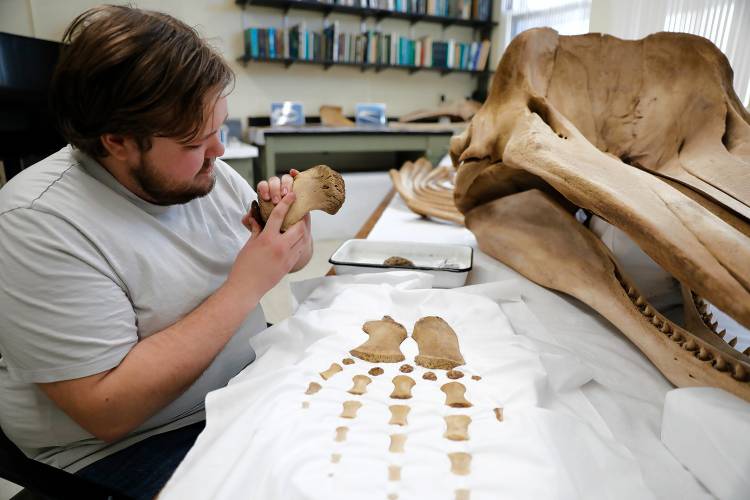
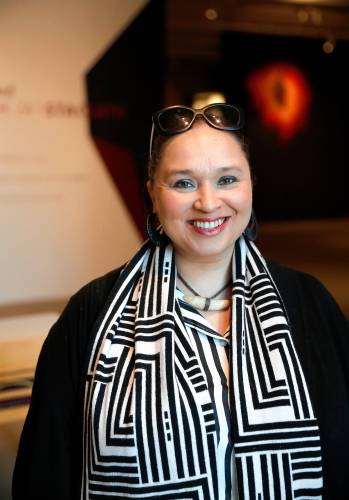
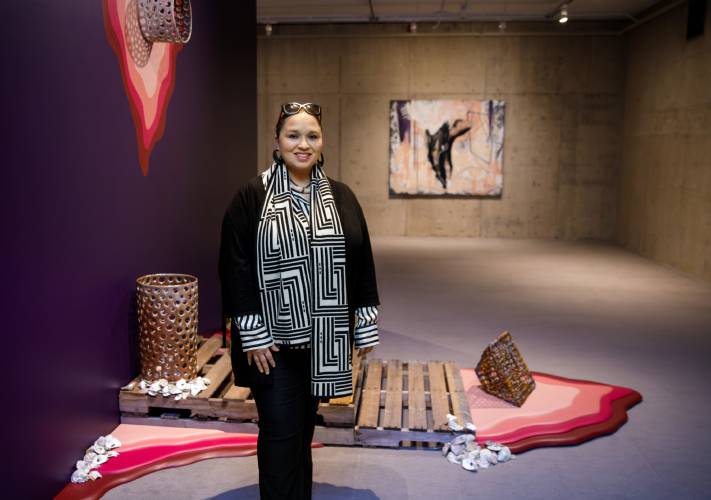
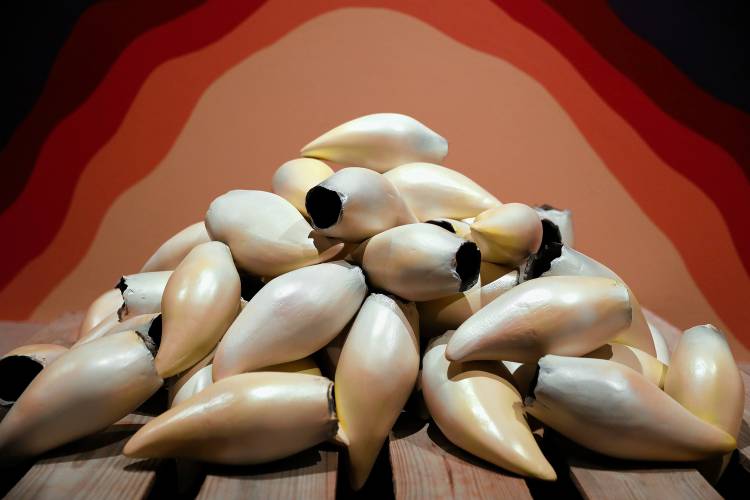
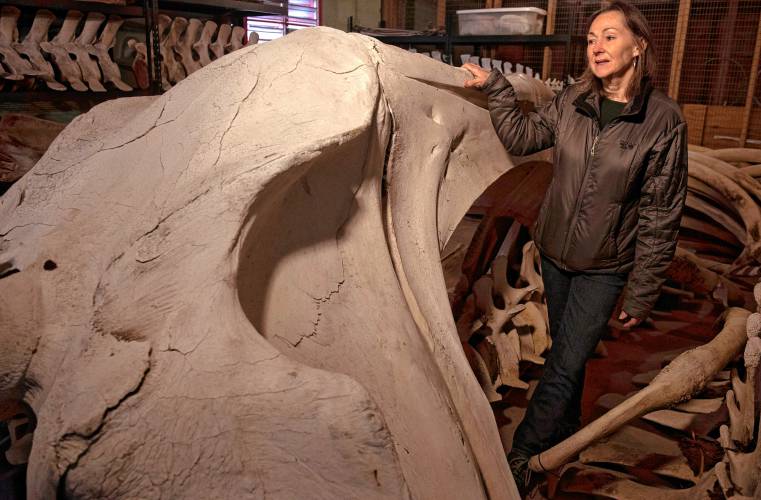
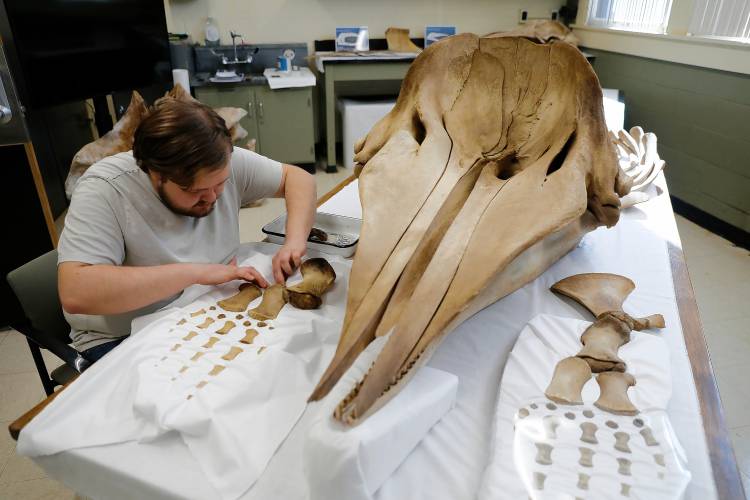
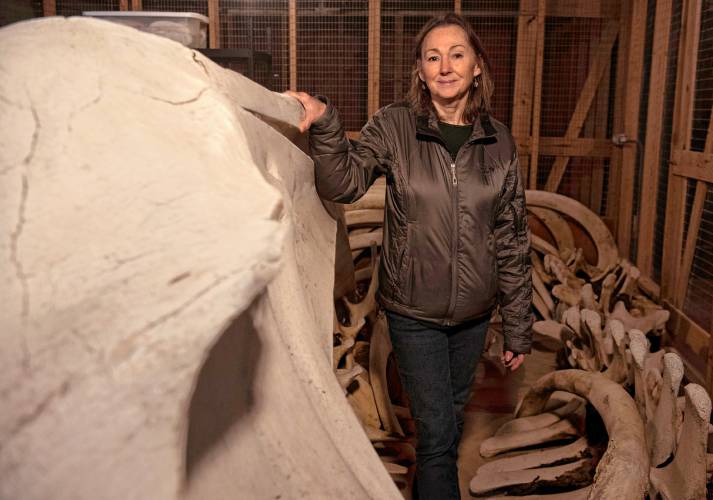
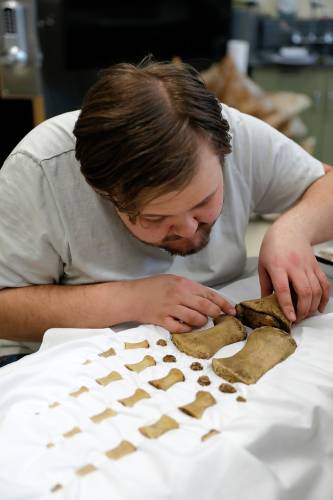
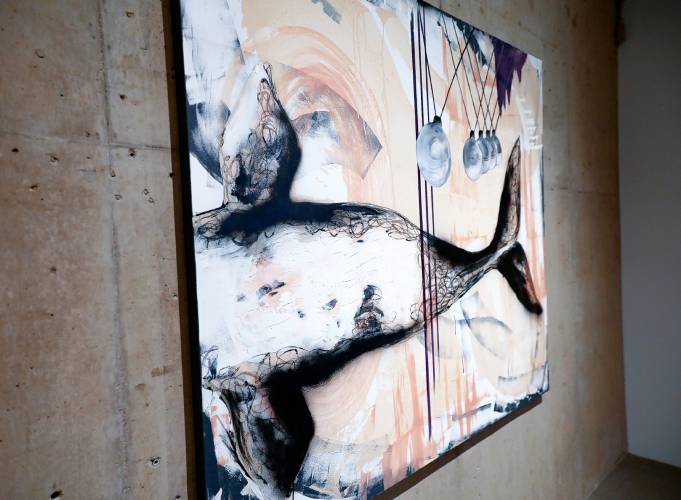
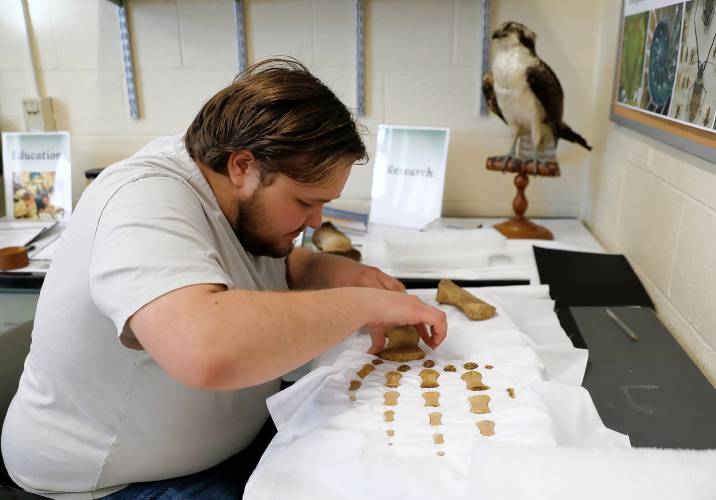
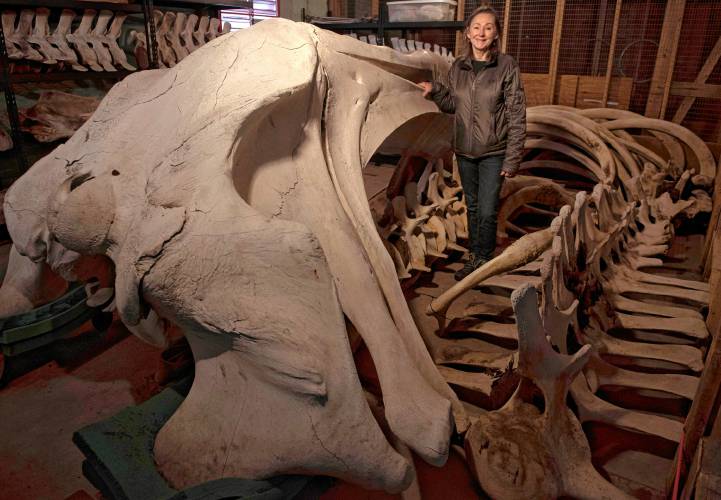
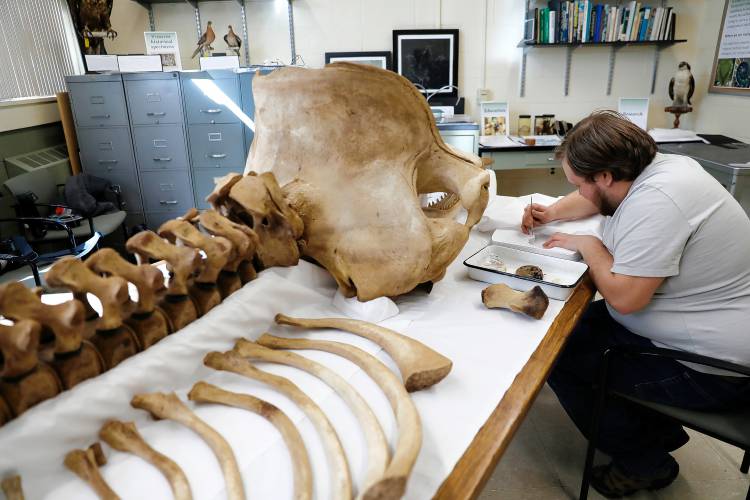
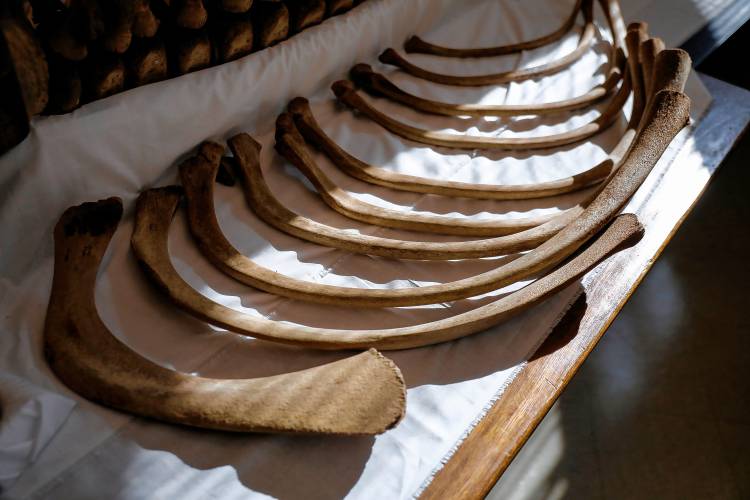
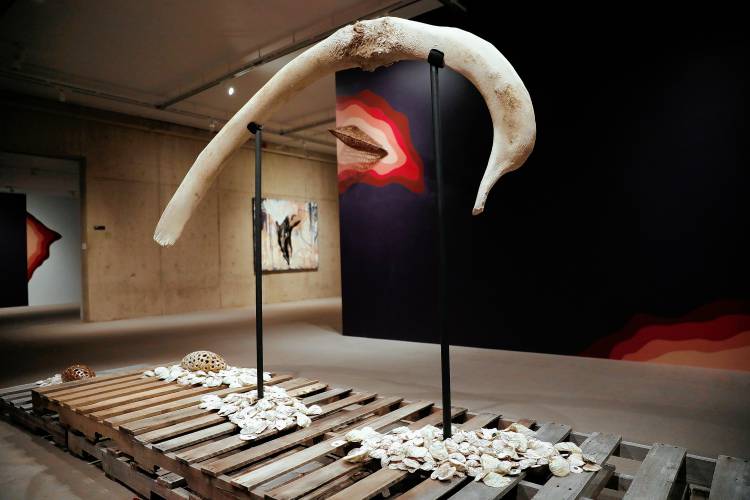
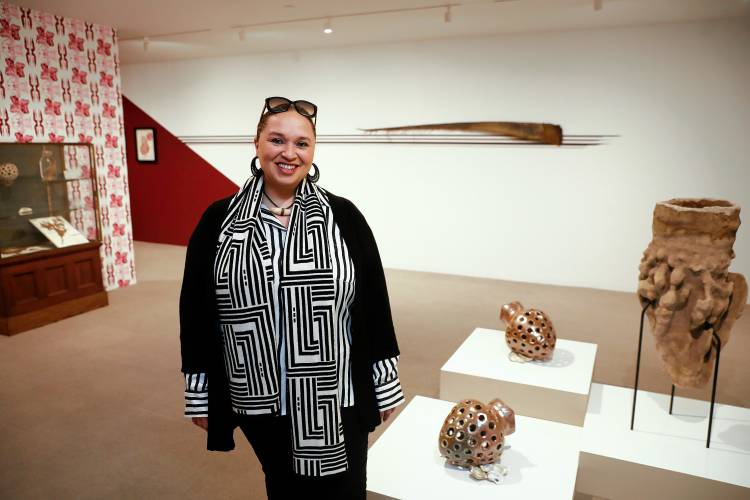
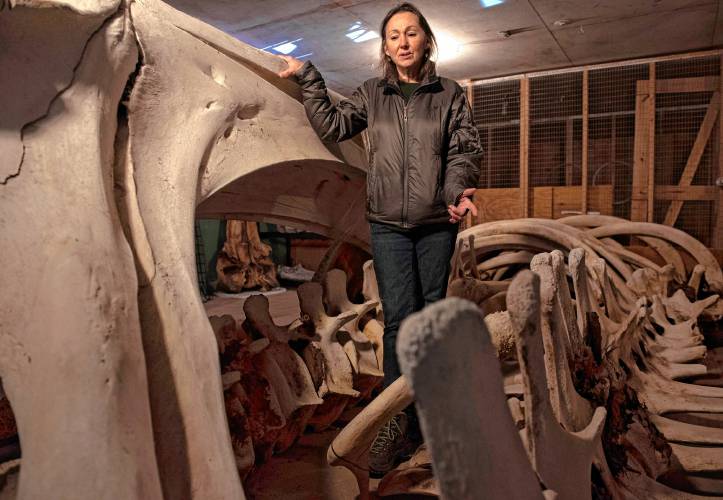
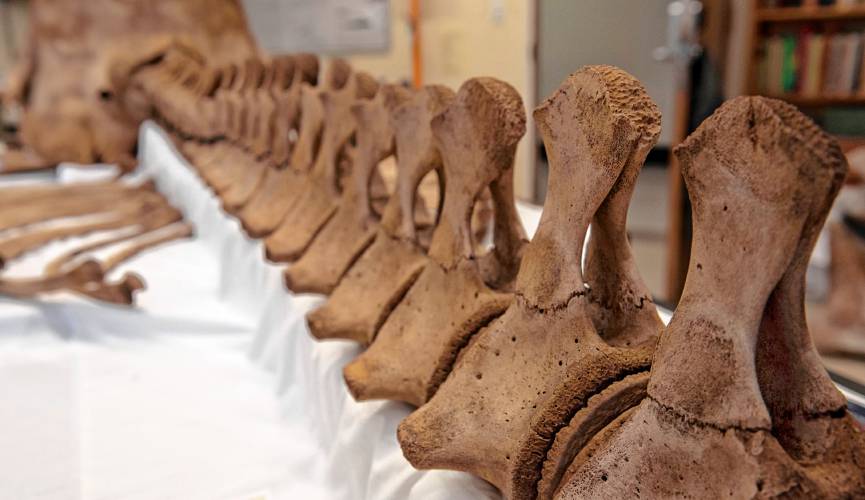
 A DIY approach to flying: Local pilots build and help build their own aircraft
A DIY approach to flying: Local pilots build and help build their own aircraft You’re up next: Western Mass open mic scene heats up post-pandemic
You’re up next: Western Mass open mic scene heats up post-pandemic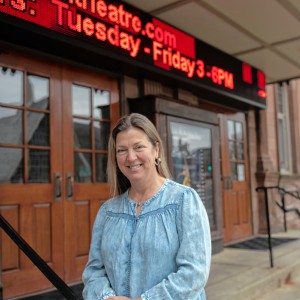 One upon a story slam: This year’s Valley Voices winners head to a final competition
One upon a story slam: This year’s Valley Voices winners head to a final competition Preserving a key part of Emily Dickinson’s legacy: Historic Evergreens house reopens at the Emily Dickinson Museum
Preserving a key part of Emily Dickinson’s legacy: Historic Evergreens house reopens at the Emily Dickinson Museum